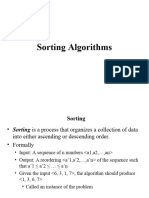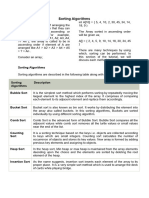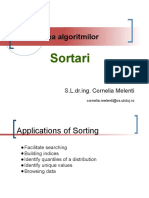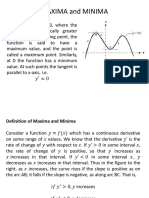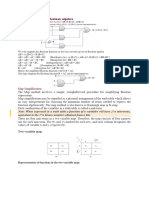0% found this document useful (0 votes)
14 views27 pagesUnit 5PPTs
The document provides algorithms for solving quadratic equations, finding the smallest and largest numbers in an array, and searching techniques such as linear and binary search. It also discusses sorting algorithms like bubble sort, selection sort, and insertion sort, detailing their processes and complexities. Additionally, it covers asymptotic notations and the efficiency of algorithms in terms of time and space complexity.
Uploaded by
19-187 SaifCopyright
© © All Rights Reserved
We take content rights seriously. If you suspect this is your content, claim it here.
Available Formats
Download as PPTX, PDF, TXT or read online on Scribd
0% found this document useful (0 votes)
14 views27 pagesUnit 5PPTs
The document provides algorithms for solving quadratic equations, finding the smallest and largest numbers in an array, and searching techniques such as linear and binary search. It also discusses sorting algorithms like bubble sort, selection sort, and insertion sort, detailing their processes and complexities. Additionally, it covers asymptotic notations and the efficiency of algorithms in terms of time and space complexity.
Uploaded by
19-187 SaifCopyright
© © All Rights Reserved
We take content rights seriously. If you suspect this is your content, claim it here.
Available Formats
Download as PPTX, PDF, TXT or read online on Scribd
/ 27


































